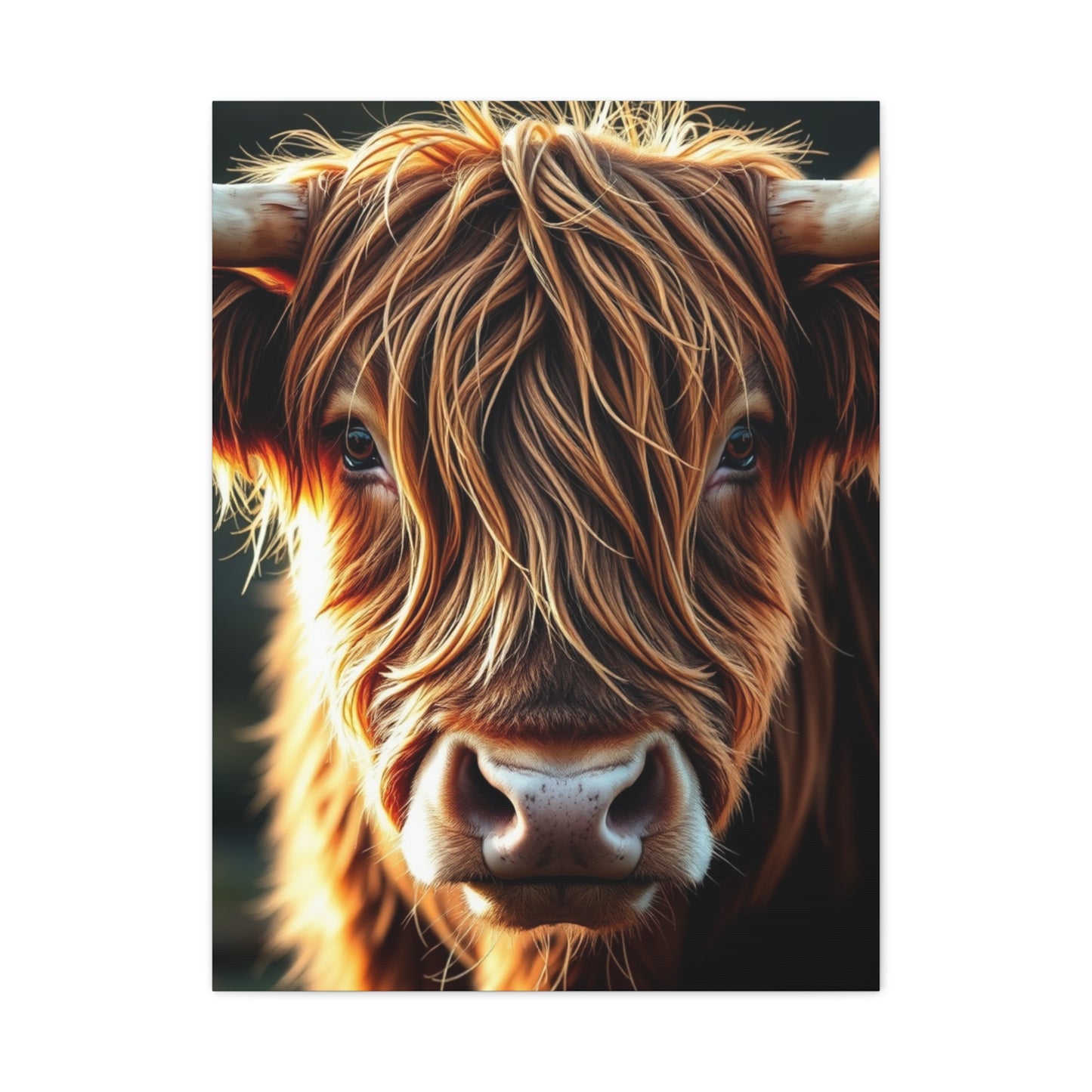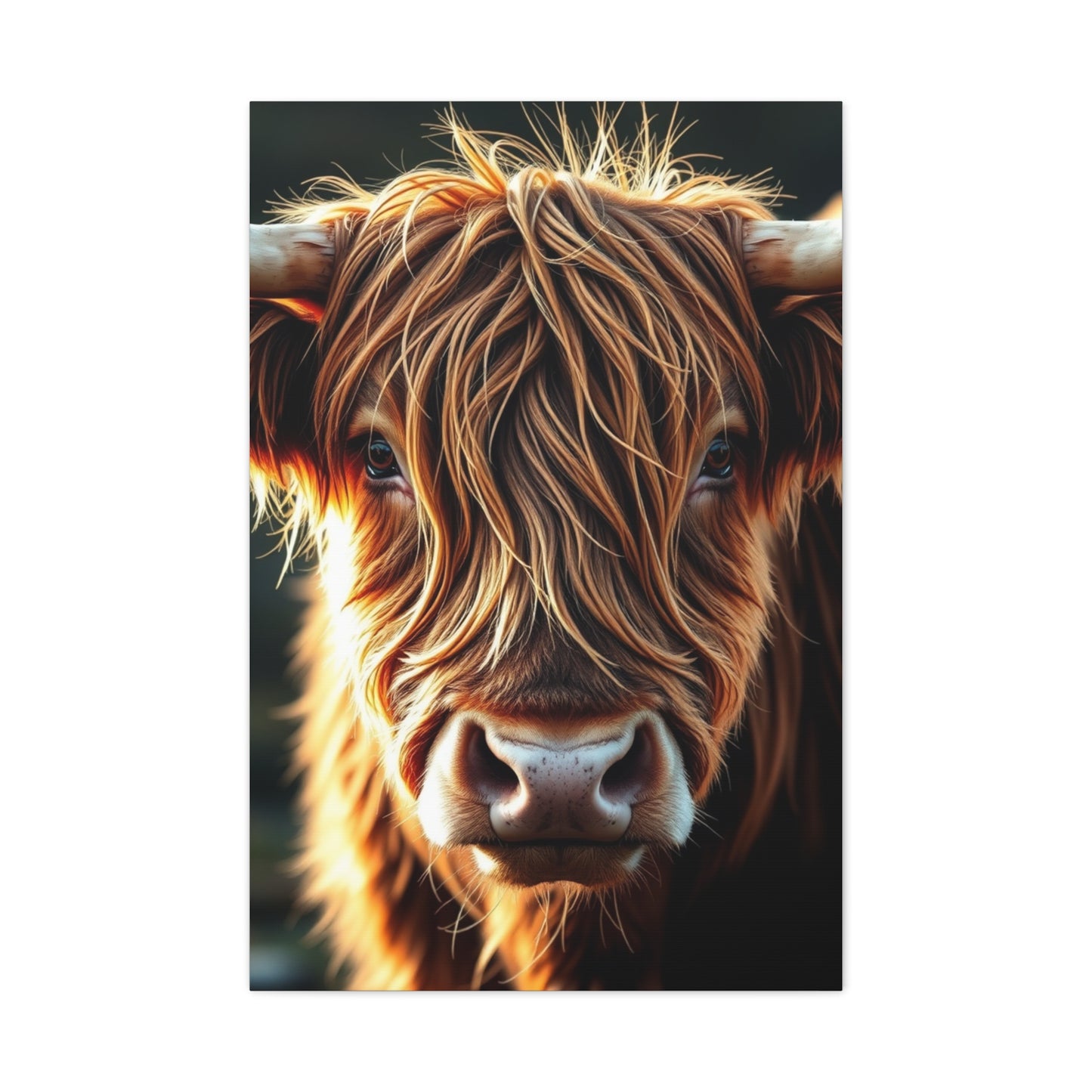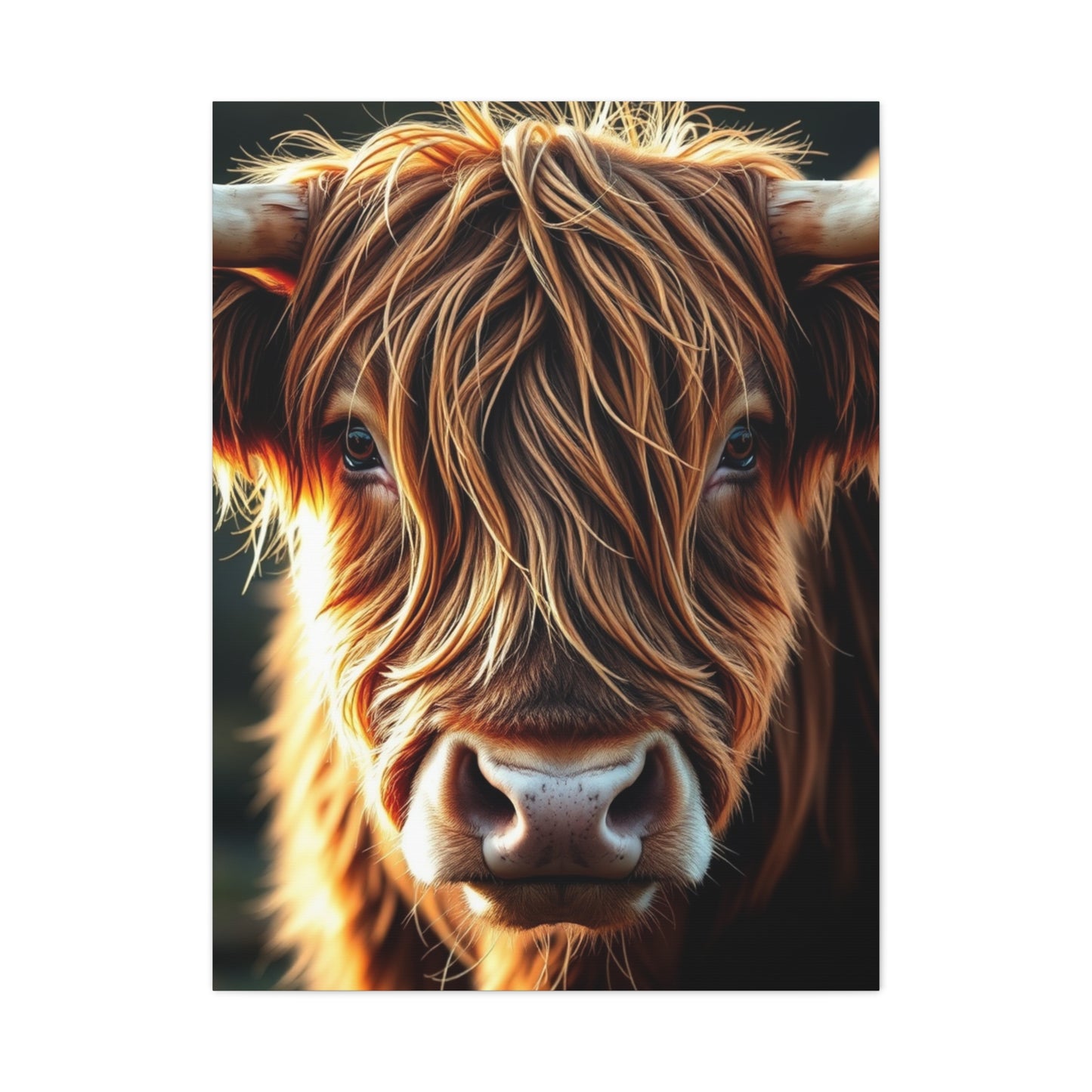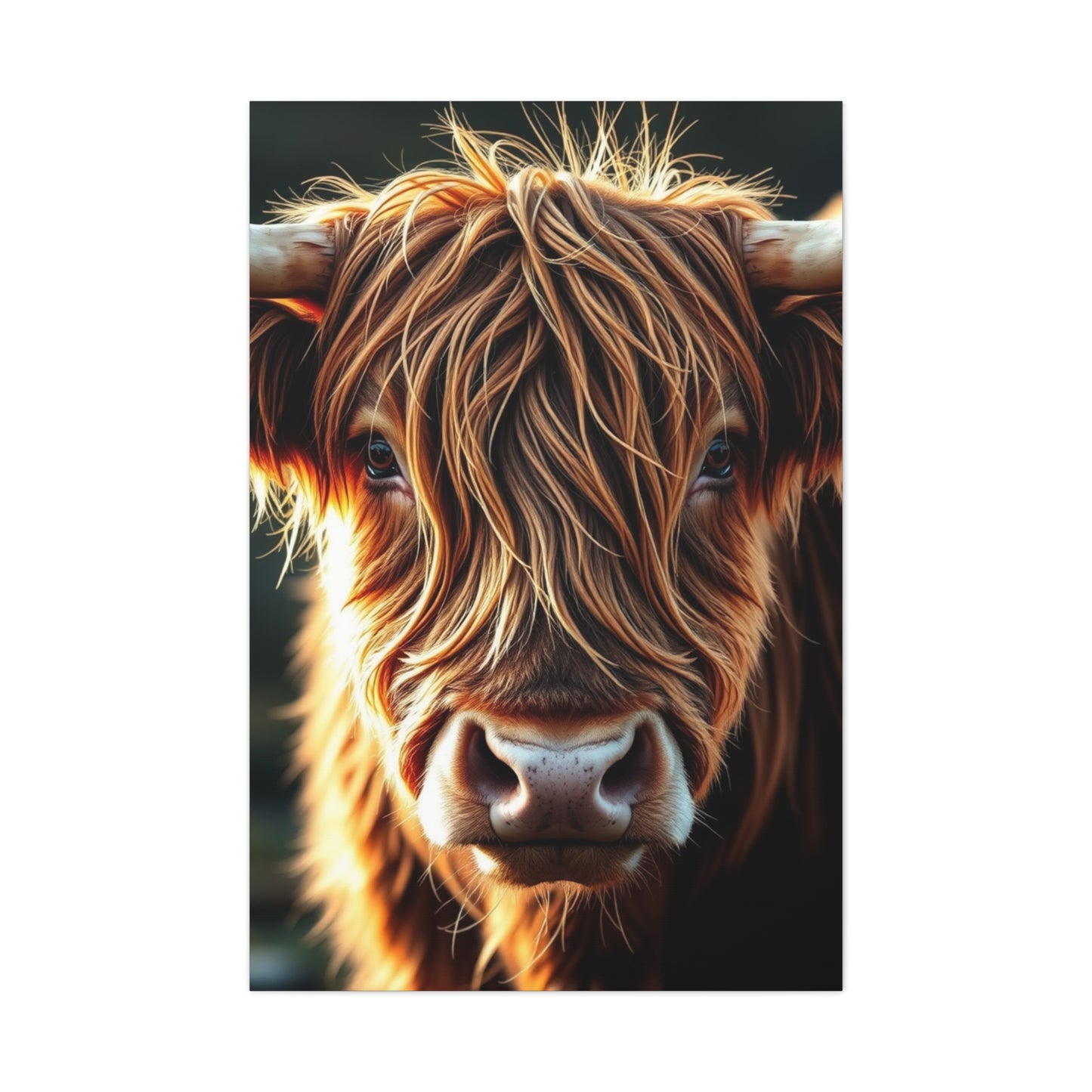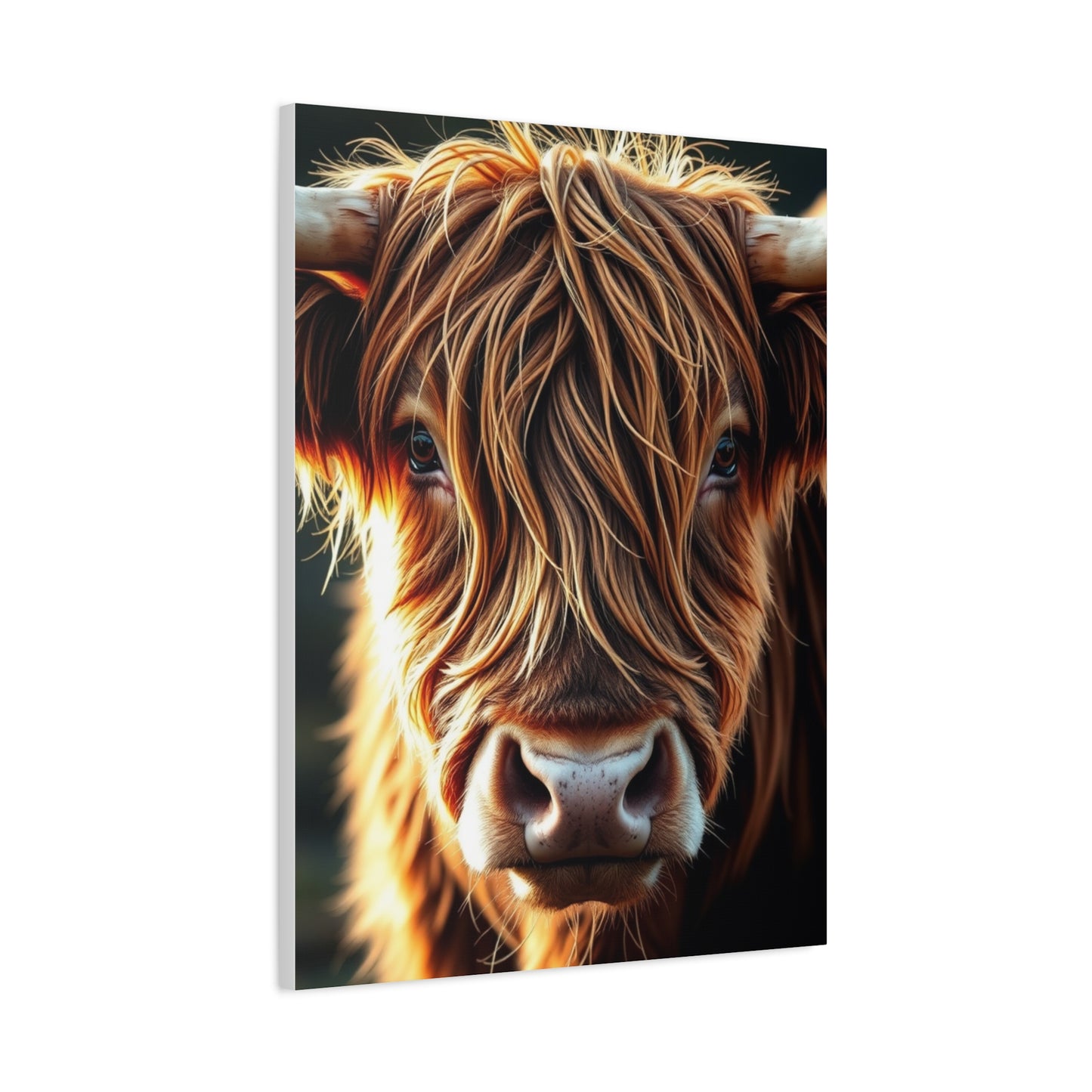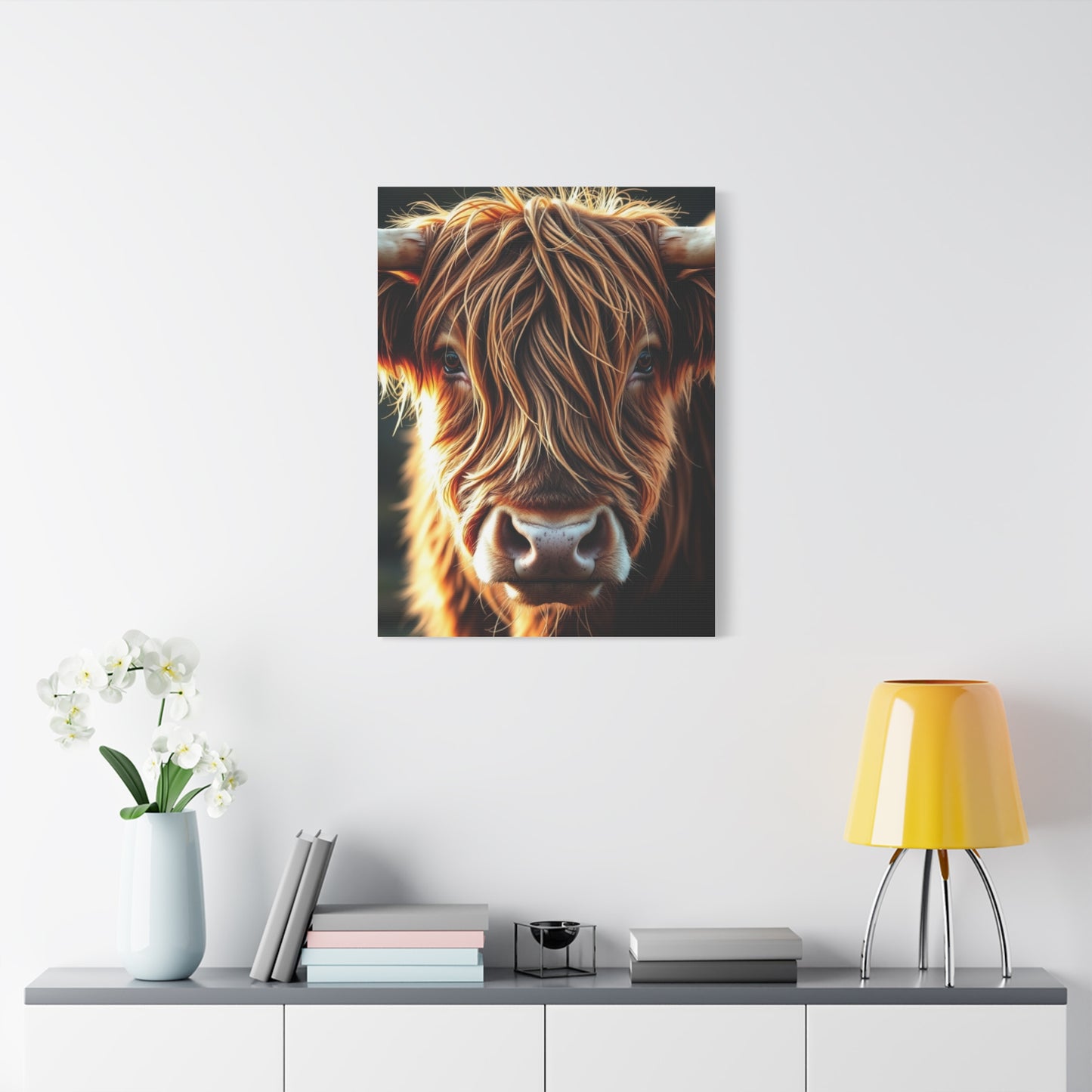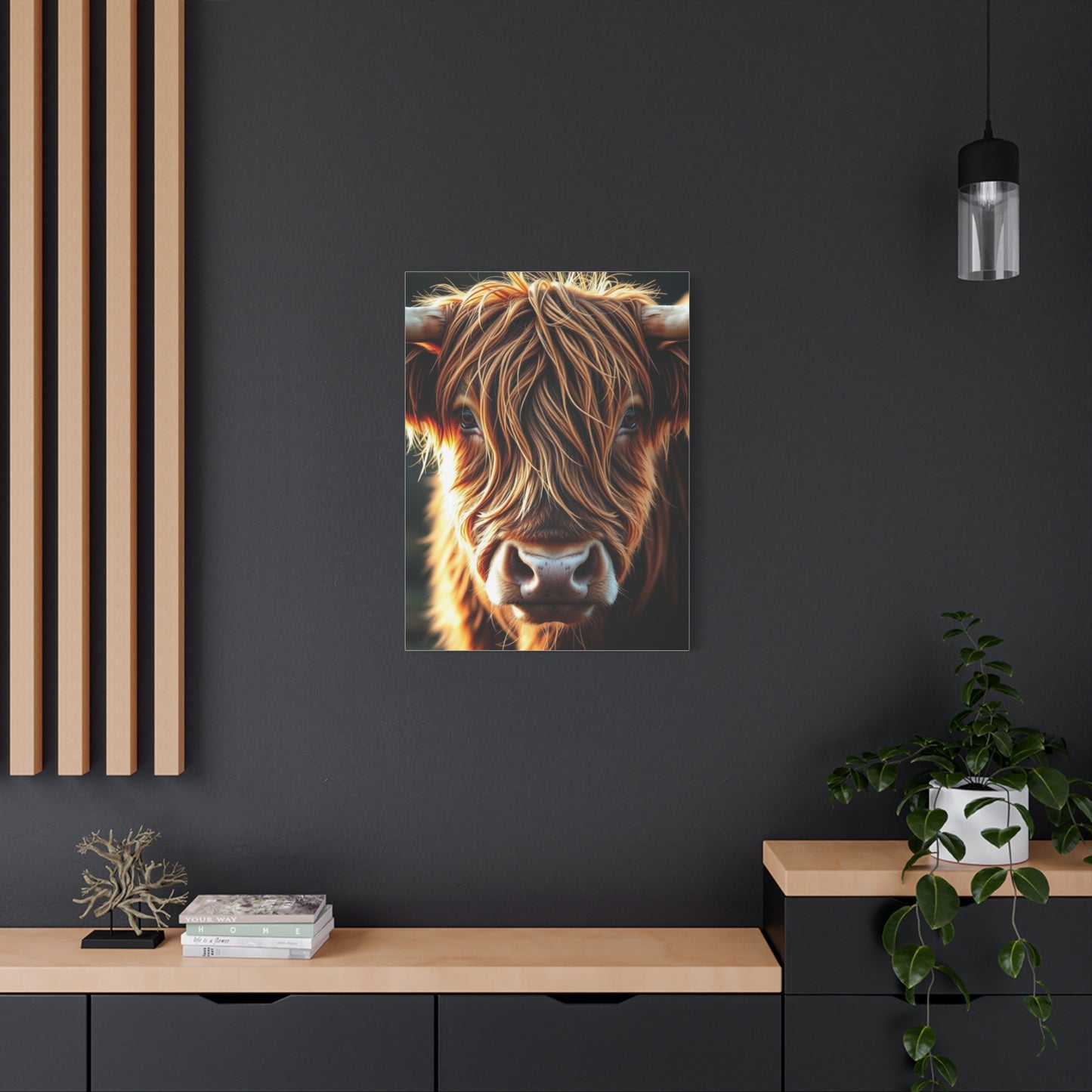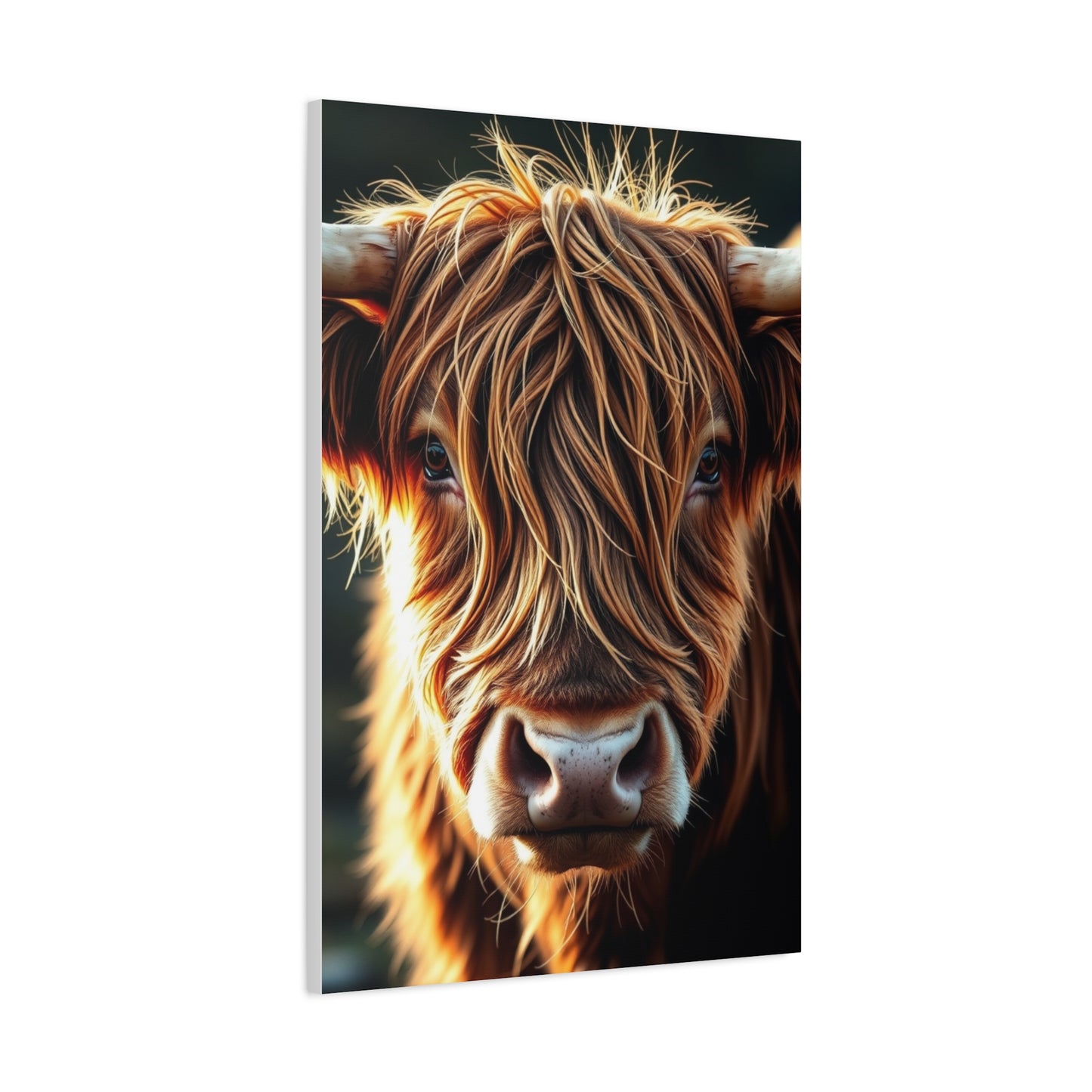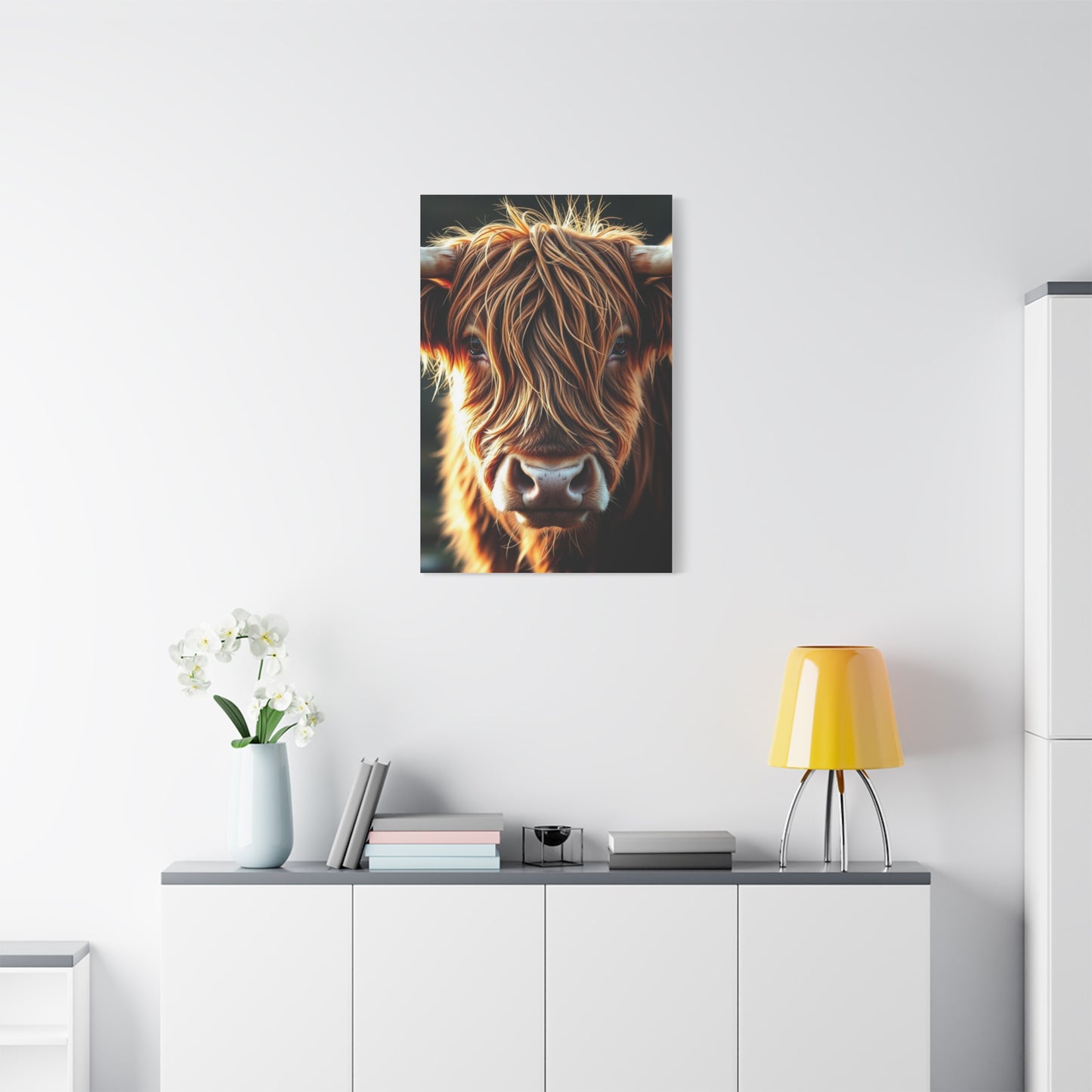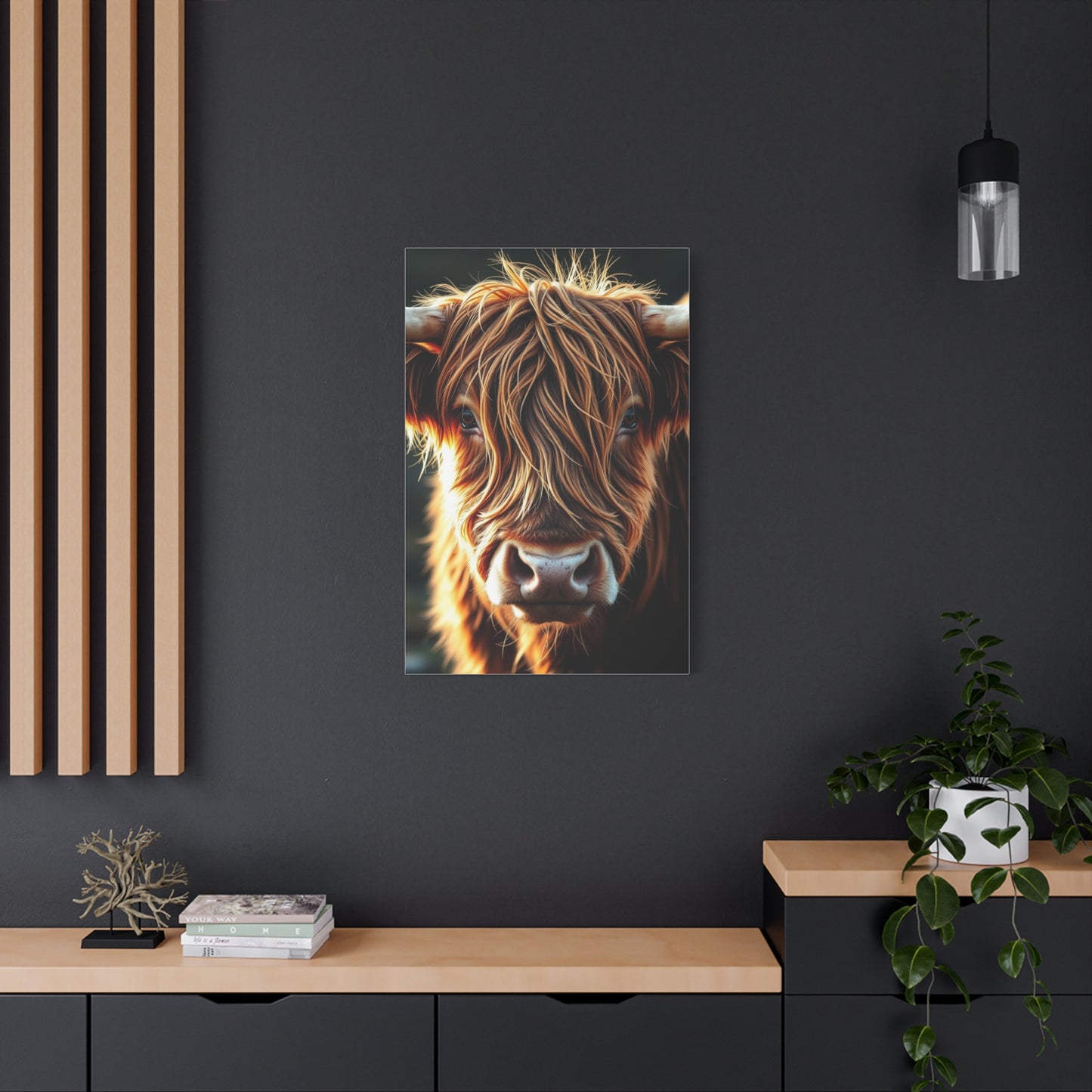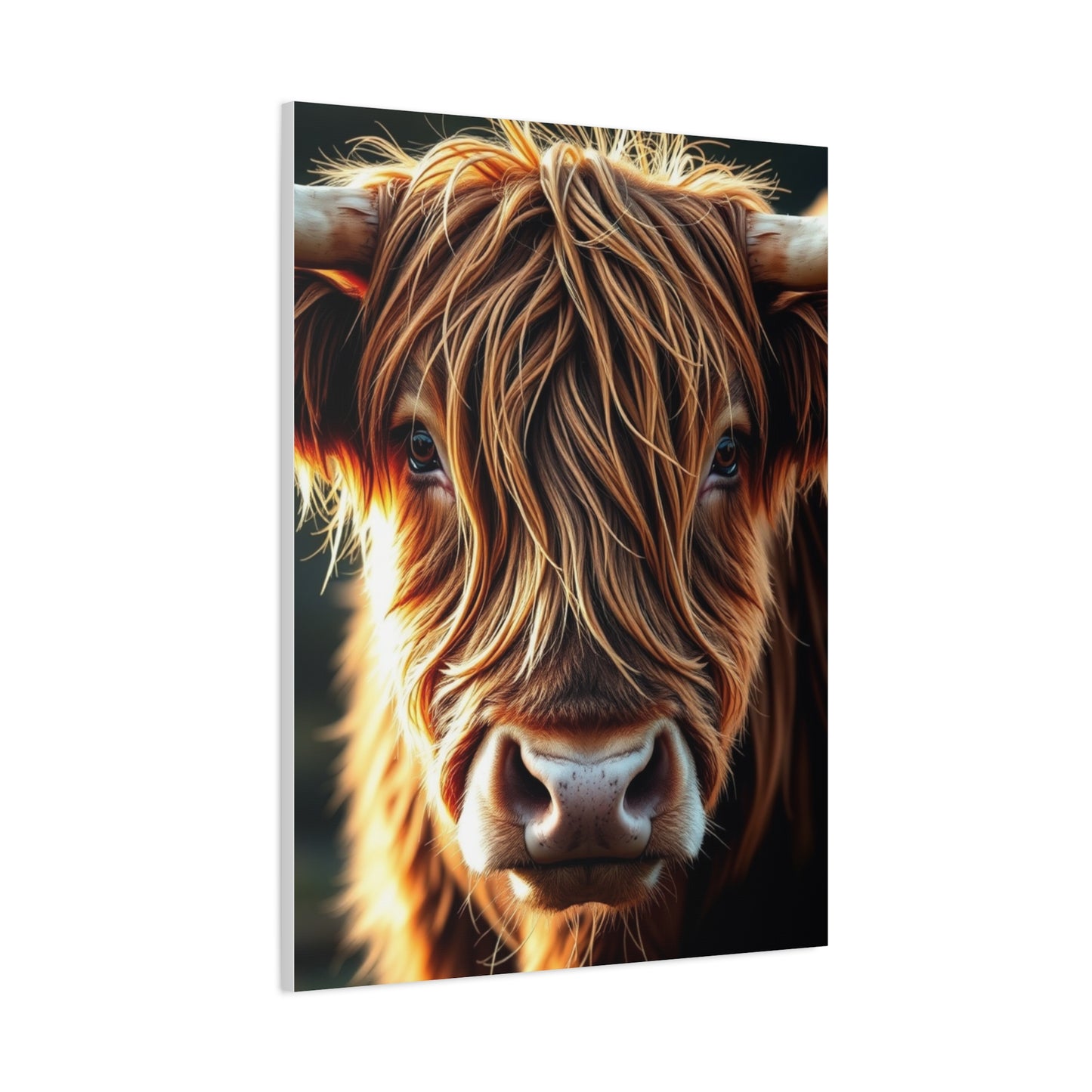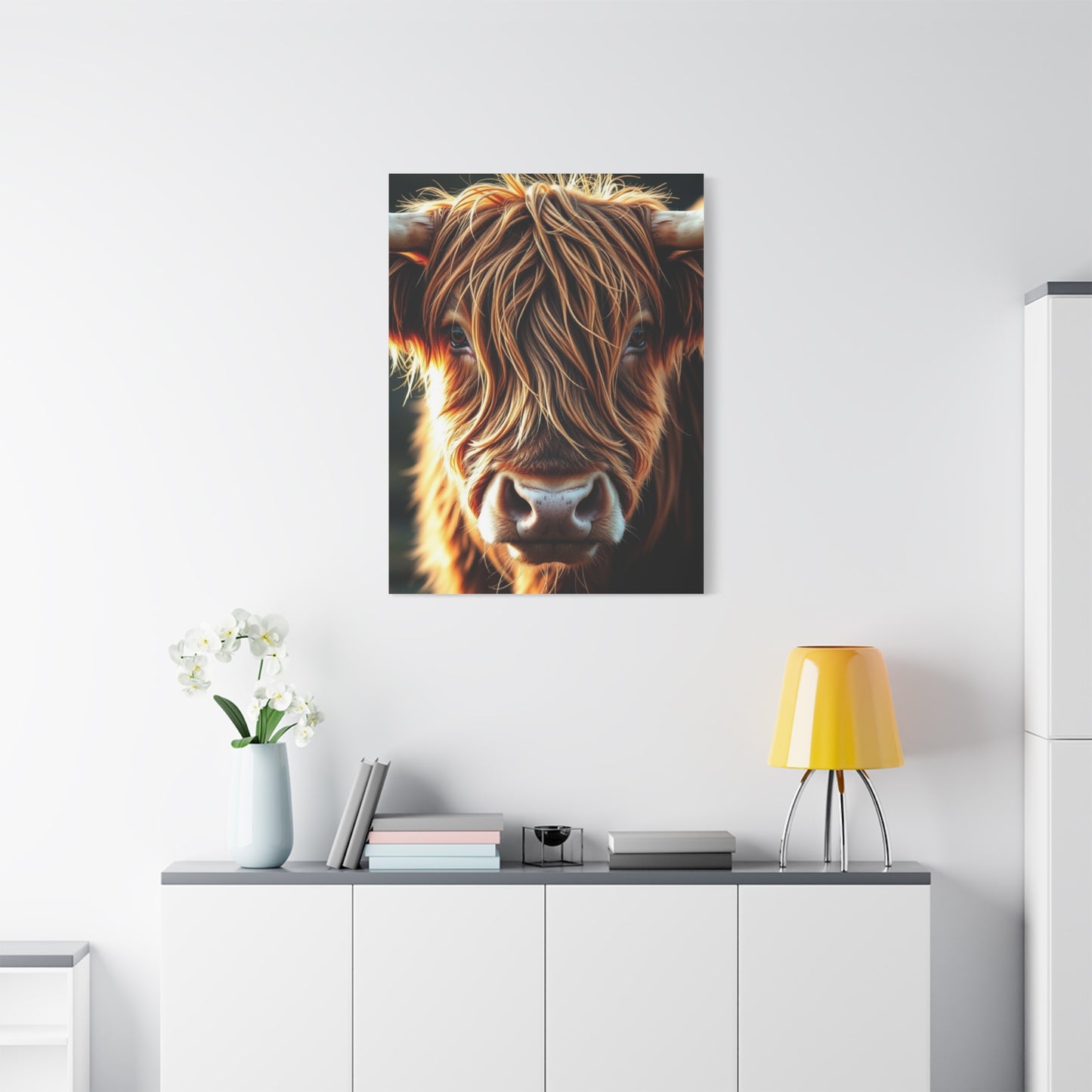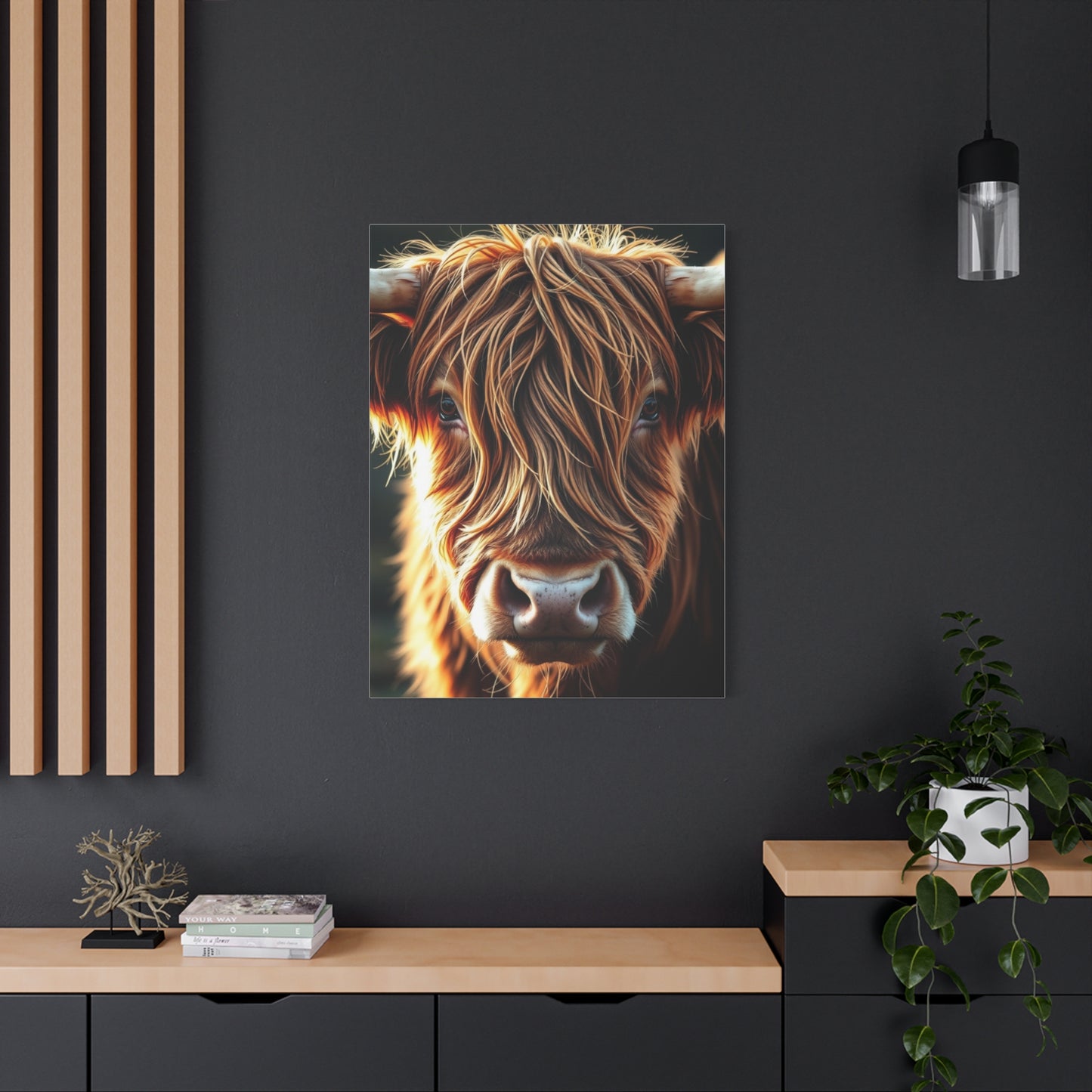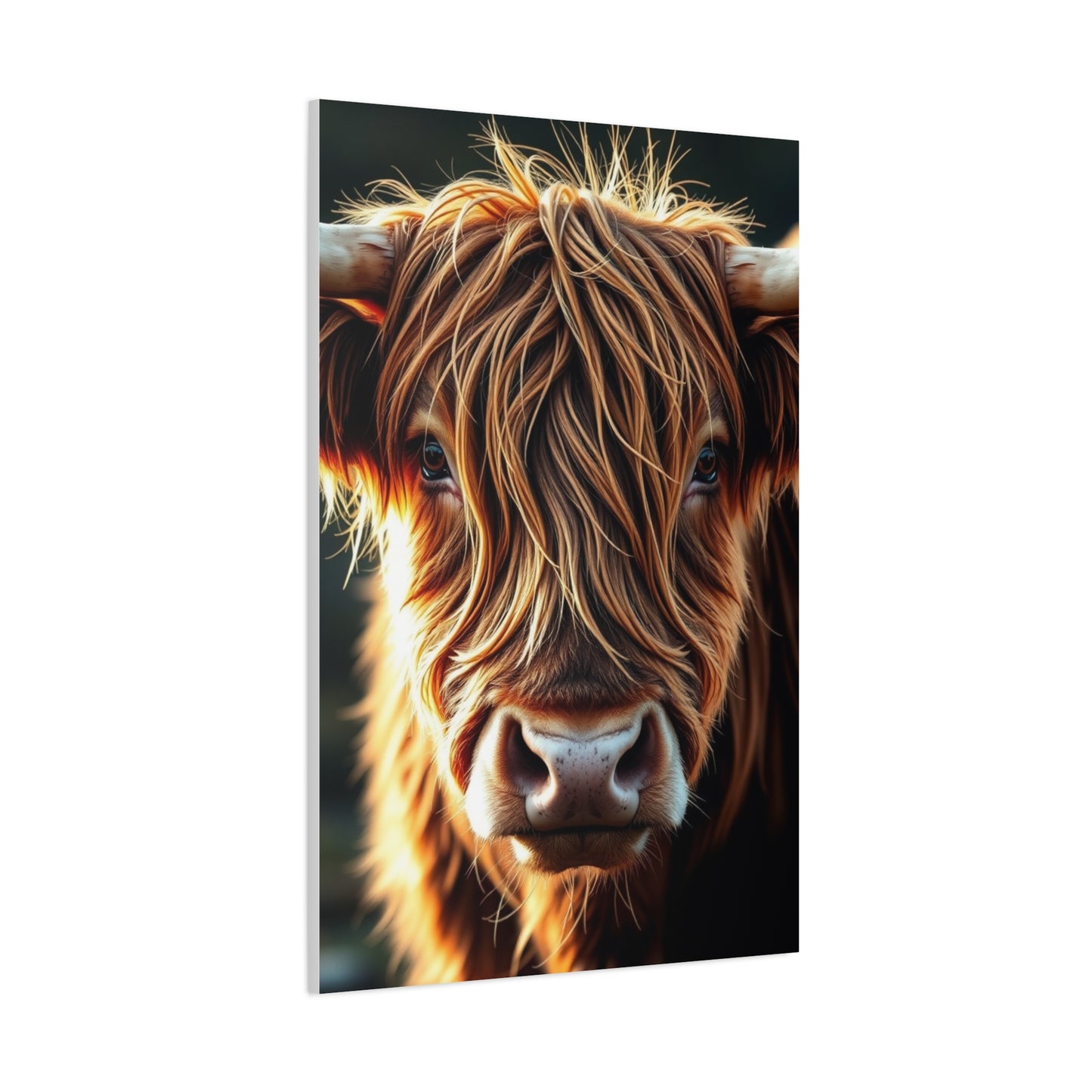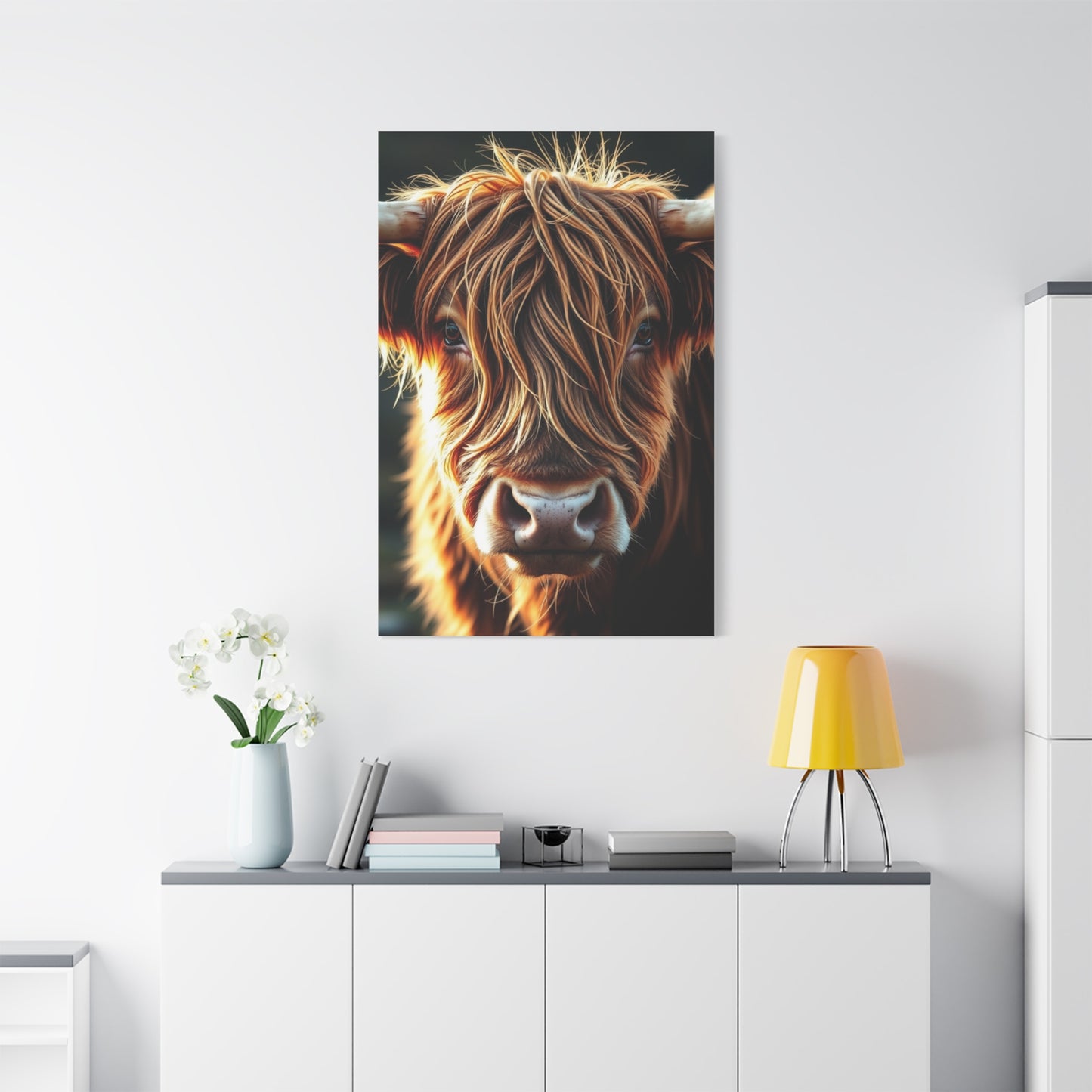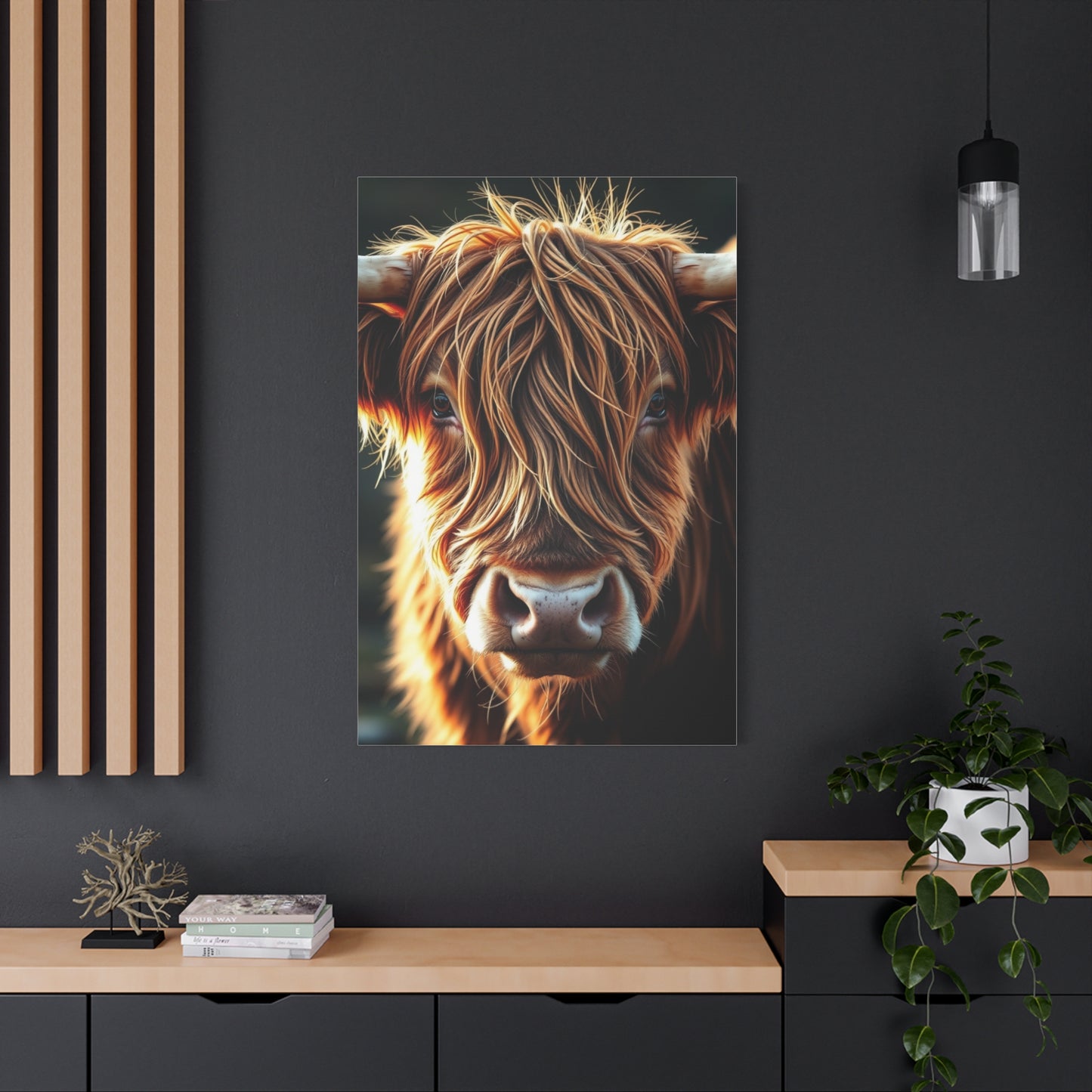Embodying Rustic Charm and Elegance with Regal Pastoral Canvas Prints
The allure of pastoral wall art has captivated art enthusiasts and homeowners for centuries, offering a perfect blend of rustic authenticity and refined sophistication. These magnificent pieces bring the serene beauty of countryside living directly into our homes, creating environments that breathe with natural tranquility while maintaining an air of noble elegance. The artistic representation of rural landscapes, farming scenes, and bucolic life has evolved from simple documentation to sophisticated artistic expression, making pastoral wall art an essential element in contemporary home decoration.
The charm of countryside-inspired artwork lies in its ability to transport viewers to simpler times, where life moved at a gentler pace and the connection to nature remained paramount. These canvas creations capture the essence of rolling meadows, peaceful farmyards, grazing livestock, and the timeless rhythm of agricultural life. The regal quality of such artwork emerges through masterful composition, careful attention to detail, and the artist's ability to elevate everyday rural scenes into something truly magnificent.
Modern homeowners increasingly seek to create environments that offer respite from the bustling urban lifestyle, and pastoral wall art provides the perfect solution. These pieces serve as windows to a more peaceful world, where the stresses of modern life dissolve into the gentle beauty of countryside vistas. The sophisticated appeal of such artwork lies not only in its aesthetic value but also in its psychological impact, offering viewers a sense of calm and connection to nature's enduring rhythms.
Discovering the Regal Charm in Countryside Art
Regal charm in countryside art manifests through the masterful portrayal of rural elegance, where artists skillfully balance the rustic authenticity of farm life with the refined sensibilities of classical artistic tradition. This unique combination creates artwork that celebrates the nobility inherent in simple country living while presenting it through the lens of sophisticated artistic technique. The regal quality emerges from the careful composition of elements, the dignified presentation of rural subjects, and the artist's ability to find grandeur in the everyday activities of countryside existence.
The countryside has always held a special place in the artistic imagination, representing an idealized connection to the land and a simpler way of life. Artists throughout history have recognized the inherent beauty in rural scenes, from the golden glow of harvest time to the peaceful stillness of morning mist over meadows. The regal charm comes from treating these subjects with the same reverence and artistic skill typically reserved for portraits of nobility or grand historical scenes.
Contemporary pastoral wall art continues this tradition, offering modern interpretations of classical themes while maintaining the timeless appeal of countryside beauty. Artists today approach rural subjects with fresh perspectives, incorporating modern techniques and contemporary color palettes while respecting the fundamental charm of pastoral life. This evolution ensures that pastoral wall art remains relevant and appealing to current audiences while preserving the essential qualities that have made such artwork beloved for generations.
The sophistication of modern pastoral wall art lies in its ability to capture not just the visual appearance of countryside scenes but also their emotional resonance. Artists skilled in this genre understand that true regal charm comes from portraying the dignity and nobility inherent in honest rural living. They recognize that farmers, shepherds, and country dwellers possess their own form of nobility, one earned through hard work, connection to the land, and harmony with natural rhythms.
Elegant Pastoral Scenes: Canvas Compositions That Captivate
Elegant pastoral scenes on canvas represent the pinnacle of countryside artistry, where technical skill meets artistic vision to create compositions that both celebrate and elevate rural life. These carefully crafted works demonstrate how artists can transform simple country moments into sophisticated artistic statements that command attention and admiration. The elegance of such pieces lies not in ostentation or complexity but in the refined simplicity with which artists capture the essential beauty of pastoral existence.
The most captivating pastoral scenes often focus on the interplay between human activity and natural environment, showing how rural communities exist in harmony with their surroundings. These compositions might feature farmers working in golden wheat fields, shepherds guiding their flocks across rolling hills, or families gathering for harvest celebrations. The elegance emerges from the artist's ability to present these scenes with dignity and grace, emphasizing the beauty and meaning in everyday rural activities.
Color plays a crucial role in creating elegant pastoral compositions, with artists typically employing warm, earth-toned palettes that reflect the natural beauty of countryside environments. The sophisticated use of light and shadow adds depth and dimension to these works, creating atmospheric effects that enhance the overall sense of tranquility and peace. Artists skilled in pastoral painting understand how to use color to create mood and emotion, employing subtle gradations and harmonious combinations that please the eye and soothe the spirit.
The composition of elegant pastoral scenes requires careful attention to balance and proportion, with artists arranging elements to create pleasing visual rhythms that guide the viewer's eye through the work. Successful pastoral compositions often employ classical principles of design, such as the rule of thirds and golden ratio, to create arrangements that feel both natural and intentionally crafted. The elegance of these works lies in their ability to appear effortless while demonstrating sophisticated understanding of artistic principles.
Modern artists creating pastoral wall art often draw inspiration from the great masters of landscape painting while bringing their own contemporary perspective to the genre. They understand that elegance in pastoral art comes not from elaborate detail but from the ability to distill the essence of countryside beauty into compelling visual narratives. These artists recognize that viewers seek not just decoration but emotional connection, and they craft their compositions to provide both aesthetic pleasure and spiritual nourishment.
Majestic Rural Tranquility: Bringing Peace Through Art
Majestic rural tranquility represents one of the most compelling aspects of pastoral wall art, offering viewers an escape from the complexities of modern life into the serene embrace of countryside peace. This quality of majesty emerges not from grandeur or drama but from the profound sense of calm and contentment that characterizes rural environments. Artists who successfully capture this tranquility understand that true majesty lies in the quiet dignity of natural rhythms and the peaceful coexistence of humanity with the natural world.
The tranquility found in rural settings has a unique quality that differs from other forms of peace. It is an active tranquility, one that emerges from purposeful engagement with the land and the cycles of agricultural life. This is not the emptiness of abandoned places but the fulfilled quiet of communities living in harmony with their environment. Artists capturing this quality create works that convey both the stillness of countryside mornings and the satisfied weariness of productive days well-lived.
The majesty of rural tranquility often manifests in pastoral wall art through the portrayal of vast, open landscapes that seem to stretch endlessly toward distant horizons. These compositions create a sense of spaciousness and freedom that contrasts sharply with the confined feeling of urban environments. The majesty comes from the recognition that these landscapes represent something precious and enduring, something that connects us to our agricultural heritage and reminds us of our fundamental relationship with the land.
Artists skilled in capturing rural tranquility often focus on the subtle beauty of everyday moments in countryside life. They might portray the gentle movement of cattle grazing in meadows, the rhythmic work of farmers tending their fields, or the peaceful gathering of families around country tables. The majesty in these scenes emerges from the artist's ability to recognize and celebrate the profound significance of these simple moments, presenting them as worthy of artistic attention and viewer contemplation.
The psychological impact of majestic rural tranquility in wall art cannot be overstated. These works provide viewers with visual anchors to peace and serenity, offering refuge from the stress and anxiety of contemporary life. The majesty lies not in overwhelming grandeur but in the gentle authority of natural beauty and the comforting predictability of rural rhythms. Such artwork serves as a reminder that tranquility remains accessible, even in our fast-paced world.
Noble Landscapes: Elevating Natural Beauty to Artistic Heights
Noble landscapes in pastoral wall art represent the transformation of ordinary countryside views into extraordinary artistic achievements that celebrate the inherent dignity of natural beauty. This nobility emerges from the artist's recognition that landscapes possess their own form of aristocracy, one based not on human hierarchies but on the timeless majesty of natural formations and the enduring beauty of well-tended agricultural lands. Artists who create noble landscapes understand that every hill, valley, and field has the potential for artistic greatness when approached with proper reverence and skill.
The concept of nobility in landscape art extends beyond mere prettiness or superficial attractiveness to encompass a deeper appreciation for the fundamental forces that shape rural environments. Noble landscapes acknowledge the hard work and dedication required to maintain productive agricultural lands, recognizing that the beauty of countryside scenes often results from generations of careful stewardship. This understanding adds layers of meaning to pastoral wall art, making these works not just decorative elements but tributes to the ongoing partnership between humanity and nature.
Artists creating noble landscapes often employ techniques borrowed from classical landscape painting, using dramatic lighting, carefully balanced compositions, and rich color palettes to elevate rural scenes to the status of high art. They understand that nobility in art comes from the combination of technical excellence and emotional depth, requiring both skilled craftsmanship and genuine appreciation for the subject matter. The most successful noble landscapes manage to capture not just the visual appearance of countryside scenes but also their emotional and spiritual significance.
The nobility of pastoral landscapes also emerges from their ability to represent universal values and experiences that transcend specific geographical locations or historical periods. While these works might depict particular rural environments, they speak to broader human experiences of connection to land, appreciation for natural beauty, and longing for simplicity and peace. This universality gives noble landscape art its enduring appeal and explains why such works continue to resonate with viewers across different cultures and generations.
Contemporary artists working in the noble landscape tradition bring modern sensibilities to classical themes, creating works that honor the past while speaking to present concerns. They recognize that nobility in landscape art requires not slavish imitation of historical styles but thoughtful interpretation of timeless themes through contemporary artistic vision. These artists understand that true nobility lies in the ability to find and express the profound beauty that exists in the everyday landscapes of rural life.
Refined Pastoral Beauty: The Art of Sophisticated Countryside Aesthetics
Refined pastoral beauty represents the highest achievement in countryside artistry, where technical mastery combines with aesthetic sophistication to create works that celebrate rural life while appealing to cultivated artistic sensibilities. This refinement emerges not from the abandonment of rustic authenticity but from its thoughtful presentation through the lens of sophisticated artistic understanding. Artists who achieve refined pastoral beauty understand that sophistication and rusticity need not be opposing forces but can work together to create artwork of exceptional quality and appeal.
The refinement in pastoral beauty manifests through careful attention to compositional harmony, where every element serves both aesthetic and narrative purposes. Artists working in this tradition understand that refinement comes from restraint as much as from skill, knowing when to include detail and when to suggest rather than specify. This sophisticated approach results in pastoral wall art that rewards both casual observation and careful study, revealing new layers of beauty and meaning with extended viewing.
Color refinement plays a crucial role in sophisticated pastoral aesthetics, with artists employing subtle gradations and harmonious combinations that please the eye without overwhelming the senses. The most refined pastoral works often feature muted palettes that capture the gentle beauty of countryside light, avoiding the garish brightness that might characterize less sophisticated approaches to rural subject matter. This careful attention to color creates artwork that integrates seamlessly into refined living environments while maintaining its ability to capture and hold viewer attention.
The sophisticated approach to pastoral beauty also involves the thoughtful selection and presentation of rural subjects, with artists choosing scenes and moments that exemplify the best qualities of countryside life. Rather than focusing on the potentially harsh or difficult aspects of rural existence, refined pastoral art emphasizes the beauty, dignity, and meaning found in agricultural communities. This selective approach results in artwork that celebrates rural life while making it accessible and appealing to urban audiences.
Refined pastoral beauty also encompasses the technical excellence required to create convincing and compelling representations of rural scenes. Artists working in this tradition must master the challenges of landscape painting, including the accurate portrayal of natural light, the convincing representation of various textures and surfaces, and the creation of atmospheric effects that enhance the overall mood and impact of their works. This technical proficiency provides the foundation upon which refined aesthetic sensibilities can build.
Countryside Grace: Embodying Elegance in Rural Settings
Countryside grace represents the embodiment of natural elegance found in rural environments, where the inherent beauty of agricultural landscapes combines with the dignified simplicity of country living to create scenes of exceptional aesthetic appeal. This grace emerges from the organic harmony that characterizes well-maintained countryside, where human activity enhances rather than detracts from natural beauty. Artists who capture countryside grace understand that true elegance need not be elaborate or artificial but can be found in the thoughtful arrangement of simple elements.
The grace of countryside settings often manifests in the gentle curves of rolling hills, the orderly arrangement of agricultural fields, and the peaceful coexistence of built and natural elements. This organic elegance differs from formal or architectural grace in its apparent effortlessness and natural flow. Artists capturing this quality create pastoral wall art that conveys a sense of ease and naturalness that contrasts sharply with the forced or artificial aesthetics sometimes found in urban environments.
Countryside grace also encompasses the dignified bearing of rural inhabitants, from farmers working their fields to families gathered for community celebrations. Artists who understand this aspect of pastoral beauty create works that celebrate the quiet nobility of rural life, showing how grace can emerge from honest work and simple living. These depictions avoid both romanticizing and patronizing rural communities, instead presenting them with the respect and admiration they deserve.
The seasonal variations of countryside grace provide artists with endless inspiration for pastoral wall art, as each season brings its own particular beauty and character to rural environments. Spring grace might be found in the tender green of new growth and the active energy of planting season. Summer grace emerges in the full abundance of growing crops and the lazy warmth of long afternoons. Autumn grace appears in the rich colors of harvest time and the satisfying sense of completed cycles. Winter grace can be found in the stark beauty of dormant landscapes and the cozy warmth of country homes.
Artists skilled in capturing countryside grace often focus on the interplay between light and landscape, understanding that the quality of natural illumination plays a crucial role in defining the graceful character of rural scenes. They learn to observe and reproduce the special quality of countryside light, from the golden glow of sunrise over fields to the soft purple shadows of evening settling over pastoral landscapes. This attention to lighting helps create pastoral wall art that not only depicts countryside scenes but also captures their essential mood and atmosphere.
Canvas of Pastoral Elegance: Masterful Artistic Technique
The canvas of pastoral elegance serves as the foundation for creating sophisticated countryside art that appeals to refined aesthetic sensibilities while maintaining authentic connection to rural subject matter. This elegance emerges through the masterful application of artistic techniques specifically adapted to the unique challenges and opportunities presented by pastoral themes. Artists working in this tradition must combine technical proficiency with genuine appreciation for countryside beauty, creating works that demonstrate both skill and sensitivity.
The preparation of canvas for pastoral elegance begins with careful consideration of surface texture and priming, as these foundational elements significantly impact the final appearance of the artwork. Artists experienced in pastoral painting understand that different canvas textures can enhance various aspects of rural scenes, from the smooth surfaces that best capture subtle atmospheric effects to the more textured surfaces that add depth and interest to depictions of natural elements like foliage and terrain. The choice of priming also affects how colors appear and interact on the canvas, influencing the overall mood and character of the finished work.
Color application techniques play a crucial role in achieving pastoral elegance, with artists employing various methods to create the subtle gradations and harmonious combinations that characterize sophisticated countryside art. Techniques such as glazing allow artists to build up rich, luminous colors that capture the special quality of natural light, while careful attention to color temperature helps create the atmospheric effects that give pastoral paintings their sense of depth and space. The most skilled artists understand how to use color not just descriptively but also emotionally, employing subtle shifts in hue and saturation to enhance the mood and impact of their pastoral scenes.
Brushwork techniques specific to pastoral subjects require particular attention to the varied textures found in countryside environments. Artists must learn to convincingly portray everything from the delicate detail of wildflowers to the broader masses of distant hills, adapting their brushwork to suit each element while maintaining overall compositional unity. The elegance in pastoral brushwork often lies in its apparent effortlessness, with skilled artists making complex technical achievements appear natural and uncontrived.
The composition of elegant pastoral canvases requires sophisticated understanding of how to arrange rural elements to create pleasing and meaningful visual narratives. Artists must consider not only the aesthetic arrangement of hills, fields, buildings, and figures but also the emotional and symbolic relationships between these elements. The most successful pastoral compositions guide the viewer's eye through the work in ways that enhance both visual pleasure and narrative understanding, creating artwork that rewards both casual observation and careful study.
Serene Fields: Capturing Peaceful Agricultural Beauty
Serene fields represent one of the most beloved subjects in pastoral wall art, offering artists the opportunity to capture the peaceful beauty of agricultural landscapes in their most tranquil and appealing aspects. These depictions celebrate the quiet dignity of productive farmland, where the cycles of planting, growing, and harvesting create an ongoing rhythm of natural beauty and human purposefulness. Artists who specialize in serene field paintings understand that agricultural beauty possesses its own unique character, different from wilderness landscapes in its evidence of careful human stewardship and productive use.
The serenity of agricultural fields emerges from their orderly arrangement and the sense of purpose they represent. Unlike wild landscapes, which might convey drama or unpredictability, cultivated fields express the harmony possible between human intention and natural processes. Artists capturing this serenity often focus on the geometric patterns created by furrows, the rhythmic repetition of planted rows, and the satisfying sense of completion that characterizes well-tended agricultural land. This orderlyness provides a visual anchor for viewers seeking peace and stability in their artistic experiences.
The seasonal transformations of agricultural fields provide artists with rich material for creating varied and engaging pastoral wall art. Each season brings its own particular beauty to field landscapes, from the tender green of spring plantings to the golden abundance of summer growth to the rich harvest colors of autumn to the stark, sculptural beauty of winter fields. Artists who understand these seasonal variations can create series of works that capture the full cycle of agricultural beauty, offering viewers the opportunity to experience the complete rhythm of rural life through art.
The treatment of light in serene field paintings requires particular sensitivity, as the quality of illumination significantly affects the mood and character of agricultural landscapes. Morning light might create long shadows between furrows, emphasizing the geometric patterns of cultivation. Midday sun could flatten these patterns while bringing out the intense colors of growing crops. Evening light might transform ordinary fields into golden seas of grain, creating almost magical effects that elevate agricultural scenes to the realm of high art. Artists skilled in field painting learn to observe and reproduce these varied lighting conditions, using them to enhance the emotional impact of their works.
The human element in serene field paintings requires careful consideration, as the presence or absence of people significantly affects the meaning and mood of agricultural art. Some artists prefer to depict fields without human figures, emphasizing the peaceful emptiness and natural beauty of well-tended land. Others include farmers, farm workers, or rural families, showing the human dimension of agricultural beauty and emphasizing the partnership between people and land that makes productive farming possible. Both approaches can create powerful and moving pastoral wall art when executed with skill and sensitivity.
Noble Life on the Land: Celebrating Rural Dignity
Noble life on the land represents a central theme in sophisticated pastoral wall art, where artists celebrate the inherent dignity and worth of rural communities and agricultural lifestyles. This nobility emerges not from wealth or social position but from the honest work, deep connection to natural rhythms, and community solidarity that characterize traditional rural life. Artists who successfully portray noble rural life understand that true aristocracy can be found in the simple acts of farming, caring for animals, and maintaining harmonious relationships with both land and neighbors.
The nobility of rural life manifests in numerous ways that provide rich material for pastoral artists. The careful stewardship of land across generations demonstrates a form of nobility based on responsibility and long-term thinking rather than short-term gain. The seasonal rhythms of agricultural work connect rural communities to natural cycles in ways that urban dwellers often miss, creating a different relationship with time and natural processes that has its own dignity and meaning. The interdependence of rural communities, where neighbors help each other through difficult times and celebrate together in good times, represents another form of nobility based on mutual support and shared values.
Artists depicting noble rural life often focus on the dignity found in honest work, showing farmers, farm workers, and rural craftspeople engaged in the productive activities that sustain their communities. These depictions avoid both romanticization and condescension, instead presenting rural work as worthy of artistic attention and viewer respect. The nobility in such depictions comes from the artist's recognition that all honest work has dignity and that the skills and knowledge required for successful farming represent their own form of expertise worthy of celebration.
The family and community aspects of noble rural life provide artists with opportunities to explore themes of continuity, tradition, and intergenerational knowledge transfer. Rural communities often maintain strong family structures and community traditions that connect present generations with their agricultural heritage. Artists can capture this continuity through depictions of multiple generations working together, community celebrations, and the passing of knowledge and skills from older to younger community members. These themes add depth and meaning to pastoral wall art, making it more than mere decoration.
The relationship between rural communities and their natural environment represents another aspect of noble rural life that appeals to contemporary artists and viewers. Rural people often develop intimate knowledge of their local environments, understanding weather patterns, soil conditions, plant and animal life, and seasonal rhythms in ways that urban dwellers rarely experience. This environmental knowledge and the careful stewardship it enables represent a form of wisdom and responsibility that has its own nobility and deserves artistic celebration and recognition.
Rustic Meets Regal: Blending Authenticity with Sophistication
The intersection of rustic authenticity and regal sophistication creates some of the most compelling and appealing pastoral wall art, where artists successfully combine the honest simplicity of rural life with the refined aesthetics of high artistic tradition. This synthesis requires exceptional skill and sensitivity, as artists must maintain the essential character of rural subjects while presenting them through sophisticated artistic techniques and elevated aesthetic sensibilities. The most successful works in this category manage to honor both the authentic nature of rural life and the refined expectations of sophisticated art appreciation.
The rustic elements in pastoral art provide authenticity and emotional connection, grounding the artwork in real experiences and genuine observation of rural life. These elements might include the weathered textures of farm buildings, the worn clothing of agricultural workers, the practical tools and equipment of farming life, and the unpretentious architecture of rural communities. Artists incorporating rustic elements must observe and render these details with accuracy and respect, avoiding the temptation to prettify or romanticize aspects of rural life that might seem harsh or unfamiliar to urban viewers.
The regal aspects of pastoral art elevate rustic subjects through sophisticated artistic treatment, careful compositional arrangement, and refined color palettes that transform ordinary rural scenes into extraordinary artistic achievements. This elevation occurs not through the addition of artificial elements but through the skillful presentation of rustic subjects using techniques and approaches typically associated with high art. The regal quality emerges from the artist's ability to recognize and reveal the inherent dignity and beauty present in rural subjects.
The successful blending of rustic and regal elements requires artists to understand both the authentic character of rural life and the sophisticated expectations of refined artistic taste. This understanding develops through careful observation of rural environments, genuine appreciation for agricultural communities, and thorough training in traditional artistic techniques. Artists who achieve this synthesis create pastoral wall art that appeals to viewers seeking both emotional authenticity and aesthetic sophistication.
The appeal of rustic-meets-regal pastoral art lies partly in its ability to bridge the gap between different lifestyle preferences and values. Urban viewers who appreciate sophisticated art can find in these works a connection to simpler, more authentic ways of life, while rural viewers can see their own experiences elevated and celebrated through refined artistic presentation. This broad appeal makes such artwork particularly suitable for diverse contemporary audiences seeking both beauty and meaning in their artistic choices.
Tranquil Fields in Fine Art: Mastery of Peaceful Landscapes
Tranquil fields in fine art represent the culmination of artistic skill applied to the peaceful beauty of agricultural landscapes, where technical mastery combines with aesthetic sensitivity to create works of exceptional quality and enduring appeal. These paintings demonstrate how artists can transform simple rural scenes into sophisticated artistic statements that command respect in the finest galleries and private collections. The mastery involved in creating tranquil field art lies not only in technical proficiency but also in the ability to capture and convey the essential peaceful character of agricultural environments.
The fine art approach to tranquil fields requires sophisticated understanding of landscape painting principles, including accurate perspective, convincing atmospheric effects, and skillful color relationships. Artists working at this level must master the challenges of depicting vast agricultural landscapes with their subtle variations in terrain, vegetation, and lighting. The tranquility of such fields emerges partly from the artist's ability to create convincing illusions of space and distance that allow viewers to feel they could walk into and through the depicted landscape.
The treatment of light in fine art field paintings demands particular attention, as the quality of illumination significantly affects both the visual appeal and emotional impact of agricultural scenes. Artists must understand how natural light behaves in open field environments, creating effects ranging from the dramatic contrast of early morning or late evening light to the more subtle gradations of overcast conditions. The mastery lies in reproducing these lighting effects convincingly while using them to enhance the overall tranquil mood of the composition.
Color harmony plays a crucial role in creating tranquil field fine art, with successful artists employing sophisticated color relationships that please the eye while accurately representing the natural beauty of agricultural landscapes. The challenge lies in capturing the often subtle color variations found in field environments, from the varied greens of different crops to the earth tones of soil and the blue-gray atmospheric effects of distant views. Fine art field painting requires the ability to see and reproduce these subtle color relationships while maintaining overall compositional unity.
The compositional sophistication of fine art field paintings often draws on classical landscape painting traditions while adapting these principles to contemporary aesthetic sensibilities. Artists must understand how to arrange the various elements of field landscapes to create pleasing and meaningful visual narratives that guide viewer attention and create satisfying artistic experiences. The tranquility of such compositions often emerges from their careful balance and harmonious arrangement of elements rather than from dramatic or attention-grabbing effects.
Regal Essence: Capturing the Nobility of Rural Environments
The regal essence of rural environments represents one of the most challenging and rewarding subjects for pastoral artists, requiring the ability to recognize and portray the inherent nobility that exists within agricultural communities and landscapes. This nobility emerges not from external trappings of wealth or power but from the fundamental dignity of productive work, the wisdom of living in harmony with natural cycles, and the quiet satisfaction that comes from honest labor and community solidarity. Artists who successfully capture this regal essence create pastoral wall art that elevates rural subjects while maintaining their authentic character.
The nobility inherent in rural environments often manifests in subtle ways that require careful observation and artistic sensitivity to recognize and portray effectively. This might include the quiet dignity of farmers working their fields, the graceful movement of livestock in pastoral settings, the harmonious arrangement of agricultural buildings within natural landscapes, or the satisfied exhaustion visible in rural workers after productive days. The regal essence lies in the artist's ability to see and celebrate these moments of quiet nobility that might be overlooked by less observant viewers.
The landscape itself can embody regal essence through the evidence it provides of careful stewardship and productive use across generations. Well-maintained agricultural lands demonstrate a form of nobility based on responsibility, long-term thinking, and deep connection to place that creates its own form of aristocracy. Artists capturing this quality focus on the signs of good stewardship visible in rural landscapes, from carefully maintained boundaries to healthy crops to the harmonious integration of human and natural elements.
The seasonal aspects of regal rural essence provide artists with varied opportunities to explore how nobility manifests differently throughout the agricultural year. Spring might reveal the hopeful nobility of new beginnings and careful preparation. Summer could show the abundant nobility of full growth and productive activity. Autumn often displays the satisfied nobility of successful harvests and completed cycles. Winter might demonstrate the patient nobility of rest and preparation for renewal. Each season offers its own particular form of rural nobility worthy of artistic attention.
The human dimension of regal rural essence requires artists to approach their subjects with respect and understanding, avoiding both romanticization and condescension in favor of authentic appreciation for rural life and values. This means portraying rural people as they are rather than as urban audiences might expect or prefer, showing the real dignity that comes from honest work and community involvement rather than imposing external notions of what nobility should look like. The most successful depictions of regal rural essence emerge from genuine understanding and appreciation of agricultural communities and their values.
Pastoral Peace: Achieving Harmony Through Rural Imagery
Pastoral peace represents one of the most sought-after qualities in contemporary wall art, offering viewers refuge from the stress and complexity of modern life through imagery that embodies harmony, tranquility, and connection to natural rhythms. This peace emerges not from emptiness or inactivity but from the balanced relationship between human activity and natural environment that characterizes well-functioning agricultural communities. Artists who successfully create pastoral peace understand that true tranquility comes from purposeful engagement with life rather than withdrawal from it.
The harmony that underlies pastoral peace manifests in numerous ways that provide rich material for artistic exploration. The seasonal rhythms of agricultural life create a natural harmony between human activity and natural cycles, with planting, growing, harvesting, and rest following patterns established over millennia. This temporal harmony provides a sense of continuity and meaning that contrasts sharply with the often chaotic pace of contemporary urban life. Artists capturing this quality create works that remind viewers of the peace possible when life follows natural rather than artificial rhythms.
The visual harmony of rural environments contributes significantly to their peaceful character, with the gentle curves of agricultural landscapes, the orderly arrangement of cultivated fields, and the organic integration of built and natural elements creating scenes of exceptional visual appeal. Artists skilled in capturing pastoral peace understand how to compose their works to emphasize these harmonious relationships, creating artwork that conveys tranquility through its visual organization as well as its subject matter.
The social harmony of rural communities adds another dimension to pastoral peace, with depictions of community cooperation, family solidarity, and mutual support between neighbors creating images of human relationships functioning at their best. Artists exploring this theme might show community harvest celebrations, neighbors helping each other with difficult tasks, or multiple generations working together to maintain family farms. These depictions remind viewers that peace emerges not just from natural beauty but from harmonious human relationships.
The psychological impact of pastoral peace in wall art cannot be understated, as these works provide viewers with visual anchors to tranquility that can have genuine therapeutic benefits. The peace conveyed by skilled pastoral art offers viewers a form of mental retreat, allowing them to experience vicariously the calm and harmony of rural environments even when physical escape from urban pressures is not possible. This function makes pastoral wall art particularly valuable in contemporary homes and offices where stress reduction and psychological well-being are important considerations.
Royal Countryside: Elevating Rural Scenes to Majestic Heights
Royal countryside art represents the pinnacle of pastoral sophistication, where artists transform rural scenes into works of such beauty and dignity that they rival traditional depictions of royal courts and aristocratic life in their grandeur and appeal. This transformation occurs not through the addition of artificial elements but through the recognition and artistic celebration of the inherent majesty that exists within agricultural landscapes and rural communities. Artists who create royal countryside art understand that true majesty emerges from the fundamental importance and dignity of agricultural life rather than from superficial decorative elements.
The majesty of countryside scenes often lies in their vast scale and the sense of timelessness they convey, with rolling agricultural landscapes stretching to distant horizons suggesting both physical grandeur and temporal continuity. Artists capturing this quality create compositions that emphasize the impressive scale of agricultural environments while maintaining intimate human elements that allow viewers to connect emotionally with the depicted scenes. The royal quality emerges from the combination of grand scale and human significance that makes rural scenes worthy of the most sophisticated artistic treatment.
The elevation of rural subjects to royal status requires exceptional artistic skill and sensitivity, with artists needing to maintain the authentic character of countryside life while presenting it through techniques and approaches that emphasize its nobility and importance. This might involve the use of dramatic lighting effects that transform ordinary agricultural scenes into something magical, sophisticated color palettes that enhance the natural beauty of rural environments, or compositional arrangements that emphasize the dignity and significance of rural activities.
The historical precedent for royal countryside art can be found in the pastoral paintings commissioned by European nobility, who recognized that idealized rural scenes could provide both aesthetic pleasure and symbolic meaning. Contemporary artists working in this tradition understand that the appeal of royal countryside art lies partly in its ability to present an alternative vision of nobility based on connection to land and natural rhythms rather than wealth and social position. This alternative vision has particular appeal for contemporary audiences seeking meaning and authenticity in their artistic choices.
The technical challenges of creating convincing royal countryside art require artists to master both the practical aspects of landscape painting and the more subtle skills of mood creation and symbolic expression. Artists must understand how to create convincing depictions of agricultural environments while imbuing them with the sense of majesty and significance that elevates them to royal status. This requires not only technical proficiency but also genuine understanding of and appreciation for the values and experiences that make rural life meaningful and dignified.
Classic Pastoral Themes: Timeless Elegance in Rural Art
Classic pastoral themes have provided inspiration for artists for millennia, offering timeless subjects that continue to resonate with contemporary audiences despite changing social conditions and artistic fashions. These enduring themes derive their power from their connection to fundamental human experiences and values that transcend specific historical periods or cultural contexts. Artists working with classic pastoral themes understand that their task is not simply to copy historical models but to reinterpret traditional subjects through contemporary artistic vision while preserving the essential qualities that have made these themes beloved across generations.
The shepherd and flock represents perhaps the most iconic of classic pastoral themes, symbolizing the harmony possible between human guidance and natural instinct, the responsibility of leadership, and the peaceful coexistence of humanity and nature. Contemporary artists approaching this theme bring modern sensibilities to classical subject matter, creating works that honor traditional pastoral imagery while speaking to current concerns about environmental stewardship and sustainable relationships with the natural world. The timeless elegance of this theme lies in its ability to convey complex ideas about responsibility and care through simple, visually appealing imagery.
Agricultural scenes depicting planting, cultivation, and harvest represent another category of classic pastoral themes that continues to inspire contemporary artists. These scenes celebrate the fundamental importance of agriculture in human civilization while acknowledging the skill, knowledge, and hard work required for successful farming. Modern interpretations of these themes often emphasize the dignity of agricultural work and the wisdom embedded in traditional farming practices, creating pastoral wall art that serves both decorative and educational purposes.
Rural festivals and celebrations provide classic pastoral themes that emphasize the social dimensions of agricultural life, showing how rural communities come together to mark important seasonal transitions and celebrate successful harvests. These scenes often feature dancing, music, food sharing, and other forms of community celebration that demonstrate the joy and satisfaction possible in rural life. Contemporary artists working with these themes create works that celebrate human community and cultural continuity while acknowledging the importance of social bonds in rural environments.
The integration of human figures with natural landscapes represents a fundamental aspect of classic pastoral themes, with artists traditionally showing how people can live in harmony with their natural environment rather than in opposition to it. This integration takes various forms, from intimate scenes of individuals contemplating natural beauty to larger compositions showing communities engaged in agricultural work. The elegance of these themes lies in their ability to present positive visions of human-nature relationships that offer alternatives to the environmental conflicts that characterize much contemporary life.
Conclusion
Embodying rustic charm and elegance through regal pastoral canvas prints is a timeless way to bring warmth, beauty, and a sense of tranquility into any space. These artworks celebrate the serene landscapes, gentle rhythms, and simple pleasures of pastoral life, capturing scenes that evoke nostalgia, comfort, and a profound connection to nature. By integrating pastoral imagery with a regal aesthetic, these canvas prints create a unique blend of rustic authenticity and refined sophistication, offering a versatile and captivating addition to interior decor.
Pastoral scenes have long been cherished for their ability to transport viewers to idyllic countryside settings—where rolling fields, grazing livestock, and quiet farmhouses embody peace and simplicity. When rendered with regal artistry, these scenes gain an elevated status, where natural beauty meets noble grace. The result is a canvas print that not only depicts a scene but tells a story—one of harmony between humans and nature, tradition and timelessness.
The rustic charm found in pastoral canvas prints appeals to those seeking to create a cozy, inviting atmosphere. Soft earth tones, natural textures, and familiar rural motifs contribute to a sense of groundedness and comfort. These prints resonate with a wide range of decor styles, from farmhouse and shabby chic to country cottage and even contemporary interiors seeking a touch of warmth and character. Their presence enhances living rooms, dining areas, bedrooms, and even commercial spaces like cafés or boutique hotels, infusing them with a welcoming and approachable spirit.
Elegance, on the other hand, emerges through the meticulous detail and compositional balance that elevates these pastoral scenes beyond mere rustic imagery. The regal quality is often expressed through the use of refined color palettes, dramatic lighting, and classical artistic techniques that highlight the dignity and beauty inherent in rural life. This duality—rustic yet elegant—makes pastoral canvas prints adaptable to both casual and formal settings, providing a bridge between simplicity and sophistication.

















